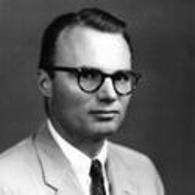
Henry Loomis (1919-2008)
Voice of America (VOA) recently broadcast a tribute to former director, Henry Loomis who passed away last month. The VOA tribute was appropriately broadcast in “Special English”–a broadcast method Loomis created and championed at VOA.
Importance of Special English
Loomis developed the concept of Special English for VOA while travelling the world in the 1950s. He noticed that English was quickly becoming an international language and VOA’s international listeners were keen to learn but needed a simplified “text book” English broadcast to better understand the content. Loomis developed English broadcasts with slower speaking rates and more simplified vocabulary.
Though VOA began broadcasting in Special English on October 19, 1959, the programming was internally criticized as ineffective and American embassies even demanded that the slower rate program be cancelled. Regardless, Loomis continued to champion the method and hundreds of listeners soon wrote to VOA praising the system. Today, Special English programming remains some of the most popular at VOA.
Other Special Language Broadcasts
Since I am a native English speaker, I rarely listen to programming in Special English. However, I have listened to programming from other international broadcasters in Special French (Français Facile).
Français Facile from Radio France International gave me the confidence to listen to professional news broadcasts in French when I was still a student. Though I speak French fluently now, I still like to listen to these broadcasts. I believe the slower rate and careful diction actually help to improve my French vocabulary.
If you have never heard a broadcast in Special English, I encourage you to listen to the VOA broadcast mentioned above–click here to download the recorded broadcast as an mp3 file (courtesy of VOA).
More information on Loomis and Special English:
